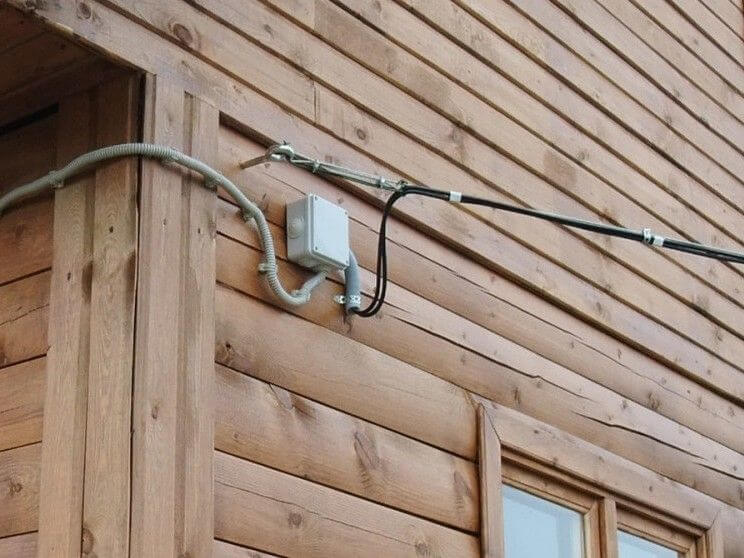How to connect a SIP wire to a private house
Connection Methods
When organizing the entry into the house, you may come across the fact that the minimum cross-section of the core is 16 mm2 (according to the chapter 2.4. PUE t. 2.4.1), as a result of which there are difficulties in bending, during the organization of connection in the input shield. Therefore, when connecting the self-supporting insulated wire to the house from the highway, they switch to a different type of cable:
- through the terminal block;
- using clampsnuts»;
- installing a box under the machines on the descent of the air wire, using the terminals of the circuit breaker to clamp the wire.
- lead CIP into an electric switchboard and into the opening machine;
- connected directly to the meter (also via machines).
Connection with a gap, to the introductory accounting device, is very painfully perceived by inspectors during the reception of the counter and introductory SIP. Energy providers may see “evil intentions” in your actions in the future. Therefore, first you need to find out and agree on the method and place of connection. Speaking of how how to connect SIP with a copper cable you can read in the article that we referred to.
Now we will consider each method separately. remember, that draw a wire through the wallaccording to PUE chapters 2.1. Clause 2.1.58 and chapters 7.1. Clause 7.1.38, it is necessary through a piece of metal or other fireproof pipe, for future replacement.
The advantage of connecting the self-supporting insulated wire to the house through the terminal box under the seal is the ease and ease of installation. The disadvantage is that any connection needs periodic maintenance, and the box is sealed, which makes terminal maintenance impossible.
Nut terminals are a simple and affordable way to switch from a self-supporting insulated conductor to another type of cable. Among the minuses are access to the terminals and the wire, as well as poor protection of the transition from the effects of the external environment.
Installing a box with a gun on the descent and transition. The terminals on the circuit breaker have the ability to clamp a wire of large cross section, in addition, the machine can perform a protective function. The disadvantages of connecting the self-supporting insulated wire to the machine are described in the first paragraph: the inability to maintain the connection and in case of automatic protection tripping, it is necessary to rise to the box to resume voltage supply.
Entering SIP in the shield is also one of the available connection options.The main advantage of this option is that the whole piece of wire is connected to the input device. The disadvantage is that it is necessary to choose a box for entering a larger size so that the loop fits inside and it is possible to install an electric meter with automatic devices right there.
In a separate article we told how to conduct wiring in the house. We strongly recommend that you read the prepared material!
Mounting technology
So, of all the above methods, the most optimal is to connect the self-supporting insulated wire to the input automaton in the shield. This installation option is discussed in the video below:
To connect a self-supporting insulated wire to the circuit breaker, it must first be crimped. How it looks, you can view on the video review:
If there are no pin tips at hand, there is another option, not the most reliable, but still it has a place to be. An interesting solution on how to connect SIP to the machine is provided in this video example:
Now you know how to connect the SIP to the house. We hope that the provided photo and video examples of installation work were useful and interesting for you!
Surely you do not know:














And by color, what is zero? There is no way we can agree, someone claims that black, someone blue, according to European standards ...
I agree
zero has been blue all his life
Sip on input, I mean ???
Now there is an NSA tip specifically designed to connect the sip cable to the machine